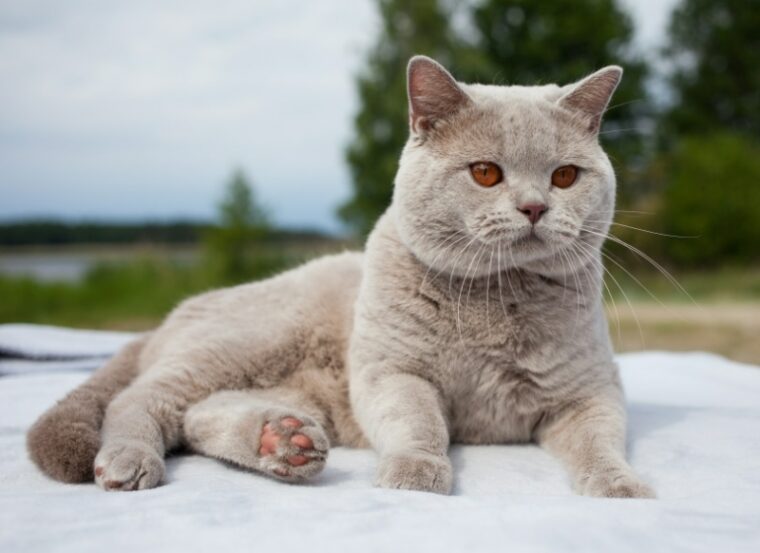
Click Below to Skip Ahead
The British Shorthair is a wonderful people and pet-friendly breed that can mesh well in just about any living situation. Distinguishable due to their stocky bodies and full faces, these beautiful cats are as lovely as they are personable. It’s no wonder they are the most popular cat breed in the UK.
Breed Overview
Height:
12–14 inches
Weight:
9–18 pounds
Lifespan:
9–20 years
Colors:
Tabby, chocolate, white, blue, red, lilac, black, tortoiseshell
Suitable for:
Any cat-loving household
Temperament:
Calm, friendly, relaxed, fun-loving
British Shorthairs were crossed with Russian Blues, Persians, and possibly a few other breeds. However, since the breed is so old, they have a solid genetic base now. Find out if these long-lived, heavy-bodied cats are right for your home—we think the answer will be a resounding yes!
British Shorthair Kittens–Before You Welcome One Into Your Family…
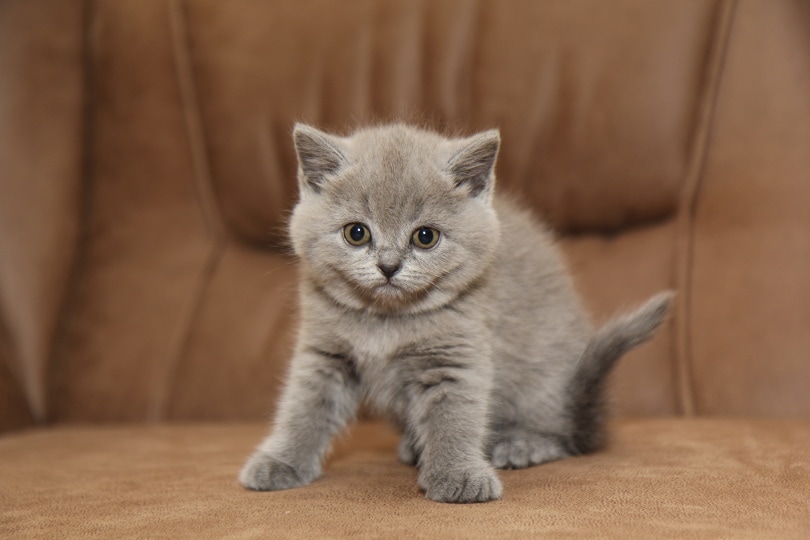
Temperament & Intelligence of the British Shorthair
You’ll be pleased to learn that the British Shorthair has a prize-winning character and excellent temperament. They mesh well with animals and people of all kinds, making them lifestyle-friendly in any situation.
These cats usually exhibit little to no aggression and aren’t particularly hyperactive. They also have no problem meeting a new person or animal—typically very accepting of newcomers or household visitors.
Because they have a calmer disposition, they make good candidates for basic training. They are exceptionally smart and pick up on new things very quickly. They get very attached to owners but acclimate moderately well to change.
British Shorthairs might not bat an eyelash to being carried around while they are kittens. However, as they age, they prefer affection without necessarily being picked up. But they will gladly accompany you as you walk through the halls or take a time out on the sofa.
Are These Cats Good for Families? 👪
Compatibility is a huge issue when it comes to owning pets. Having a pet that can mesh with your lifestyle is crucial to the happiness and longevity of you both. While individual personalities will differ, these cats work well in multi-cat homes or single cat living.
British Shorthairs make absolutely wonderful additions to any cat-loving household. These kitties are agreeable, meshing with every member of the home. They are social, typically even with strangers. If you want a kitty who will do well with newborns and seniors alike, it’s a terrific breed to consider.
Since these cats have moderate activity levels, they work well in most size houses as well. You can have them in a studio apartment or 5,000 square foot, three-story home—they’ll acclimate either way.
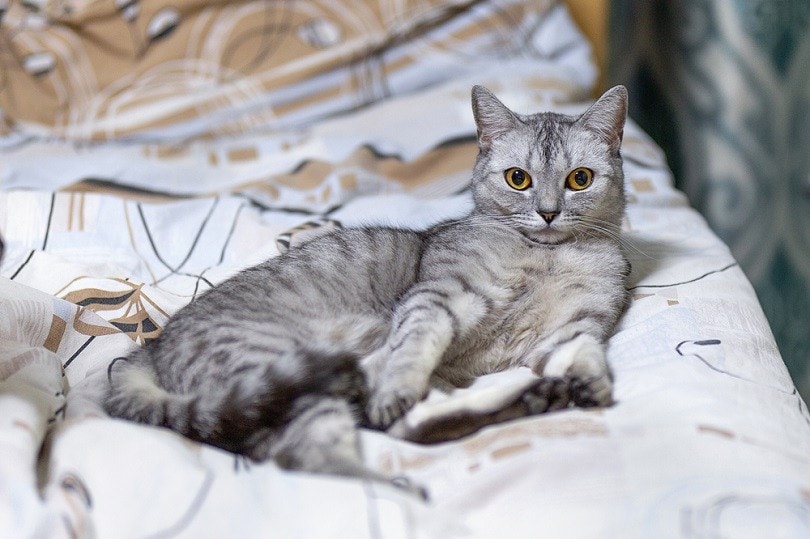
Does This Breed Get Along With Other Pets?
A really common reason for rehoming is due to conflict between pets. The family dog doesn’t like the newly adopted kitten. Or, the old craggy cat keeps trying to attack the new cockatoo.
To avoid these mishaps entirely, it’s imperative to know the cat’s ability to adapt.
British Shorthairs can get along very well with other pets, especially when they are raised together. Your kitty will love cuddling up with another feline friend or running around with the family dog. In fact, they prefer having furry friends around, even though they love their humans a lot!
However, because cats are highly predatory, they should never be alone with smaller cage animals like rodents, reptiles, or birds. Even very mild cats can hurt these small pets during play. Always supervise any close encounters and try to keep them separated at all times to ensure safety.
Things to Know When Owning a British Shorthair:
Food & Diet Requirements 
The British Shorthair has no genetic problems that would affect their diet right off the rip. But you should carefully select your cat’s diet with the help of your veterinarian.
As kittens, British Shorthairs need a diet that is specifically formulated for their growing bodies. When they age, you can transition them to an adult diet. Since they mature slowly, consult with your vet about when is best.
As far as diet content is concerned, you have a few options:
Ultimately, what diet works best for your cat is up to you. It might be trial and error to find out what appeals to their tastebuds and what works in your budget.
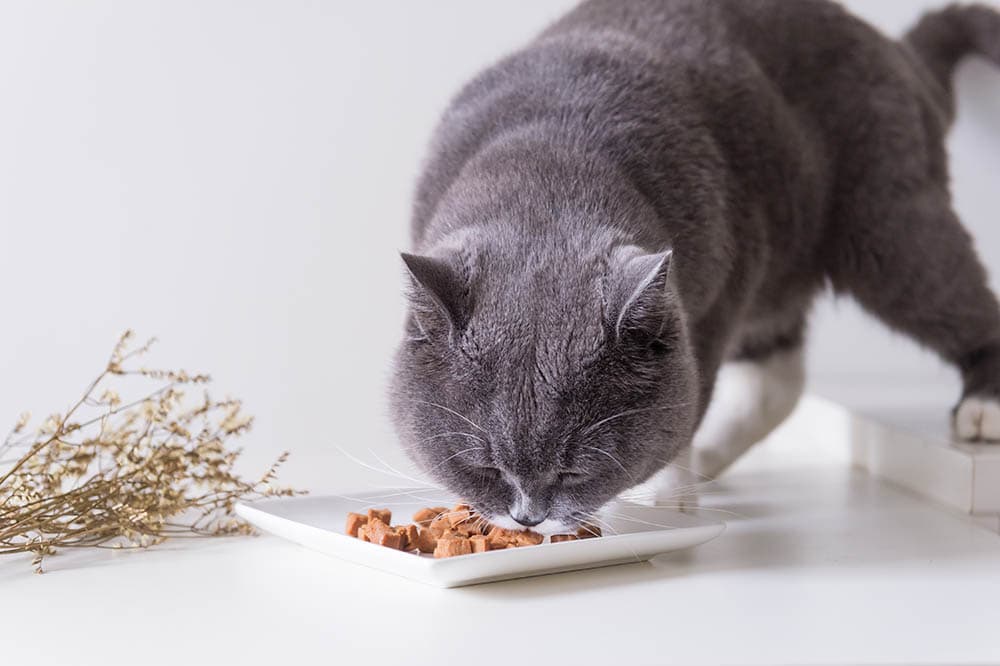
Exercise 🐈
As young cats, your British Shorthair might have quite a bit of energy, but it usually tapers off once you have them fixed. This breed is often described as relaxed and even somewhat lazy, which varies from cat to cat.
Luckily, you won’t have to convince them too much. British Shorthairs need roughly 15 minutes of exercise per day to stay happy and healthy.
Your kitty will enjoy lots of activities, so it’s best to provide them with entertainment. They should have somewhere to sharpen their claws, run out some energy, hideaway, and perch. So, get creative filling your home full of fun, action-packed adventures.
Training 🧶
When it comes to litter training, it should be a cinch. Once you bring home your kitten, they should catch on within a matter of days. We recommend restricting their range for the first few days, expanding it little by little. This helps them acclimate with the litter box and remember where it’s located.
As for advanced training, these kitties definitely have the brains, but do they have the willingness to listen? They absolutely can. Most felines do best with positive reinforcement training instead of harsh punishments.
If you have some snacks on hand, all the better. These kitties are highly food motivated, making better results when you offer some goodies.

Grooming ✂️
A British Shorthair has a straight, dense coat that would benefit from daily brushing. Although kitties do most of the hard work for us in the bathing department, giving them an occasional whole-body wash is a terrific idea. It keeps their coats soft, oils evenly distributed, and removes collected dirt and debris.
It’s fully up to you whether your cat needs nail trims or covers—but we do recommend making sure they have a suitable scratching surface at all times.
Health and Conditions 🏥
To make sure your British Shorthair is healthy, it’s best to get them in for regular vet appointments. When you bring them home, they should have already had a licensed vet do a health check—and most of the time, they have had their first round of vaccines.
Once you take them to your vet, they will do something similar. They will look your kitty over to make sure they are growing as they should. They might also give them a round of booster shots.
In their first year, you can expect to be at the vet a little more frequently than you will once they are fully grown. You should take them in for scheduled appointments and spay or neuter your kitty before they reach the age of sexual maturity at six months.
Luckily, British Shorthairs are one of the healthiest cat breeds you can have. That doesn’t mean certain factors won’t influence poor health in some cases. Here are some to look out for.
Male vs Female
There are few differences between males and females in the British Shorthair breed when it comes to personality since the character is so relative to the individual. However, in most cases, males are a bit more social and lovable, whereas females are slightly choosier about who they spend their time with.
Physically speaking, males outweigh their female counterparts by a few pounds. They are also stockier with thicker skulls. Females, while still heavy-bodied, are usually slimmer with a round, narrower head.
When cats reach sexual maturity around six months of age, both genders can spray. However, it’s more common in intact males. While neutering lessens the frequency or desire to spray in males by reducing hormones, they might still continue the behavior after the surgery.
To reduce to eliminate the chances of spraying, you should spay or neuter your cat before six months.
3 Little-Known Facts About British Shorthairs
1. It takes a British Shorthair cat nearly four years to reach physical maturity.
British Shorthairs take the longest to mature but have one of the longest lifespans as a consequence.
2. British Shorthairs have long lifespans—take Cola the cat for example.
British Shorthairs have impressive lifespans that can curve upward of 20 years. But Cola the cat really took the cake, living a full 28 years before crossing the Rainbow Bridge in 2013.
3. These cats have the nickname “British blues”.
While you can see the British Shorthair has a few staggeringly beautiful coat colors, they were initially nicknamed “British blues” due to their predominantly blue coat. This color was due to the Russian Blue heritage in the bloodlines.
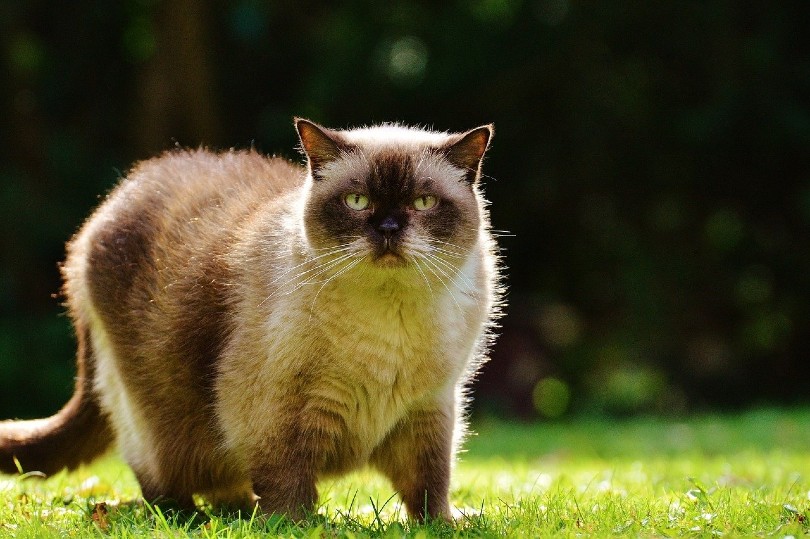
Final Thoughts
If you want a relaxed cool cat that everyone can love, the British Shorthair takes the cake with overall friendliness and excellent chances of compatibility. Also, as popular as the breed is, you likely won’t find a shortage—even if you want to adopt.
So, what do you think of the social butterfly that is the British Shorthair? Does their overall description jive with you? If so, it’s time to start mulling over options—checking with local breeders or possibly see if a homeless kitty is waiting to be loved.
See Also:
- 10 Best Cat Foods for British Shorthairs – Reviews & Top Picks
- Chartreux vs British Shorthair: What’s the Difference? (With Pictures)
Featured Image Credit: outdoor_Rutina, Shutterstock






